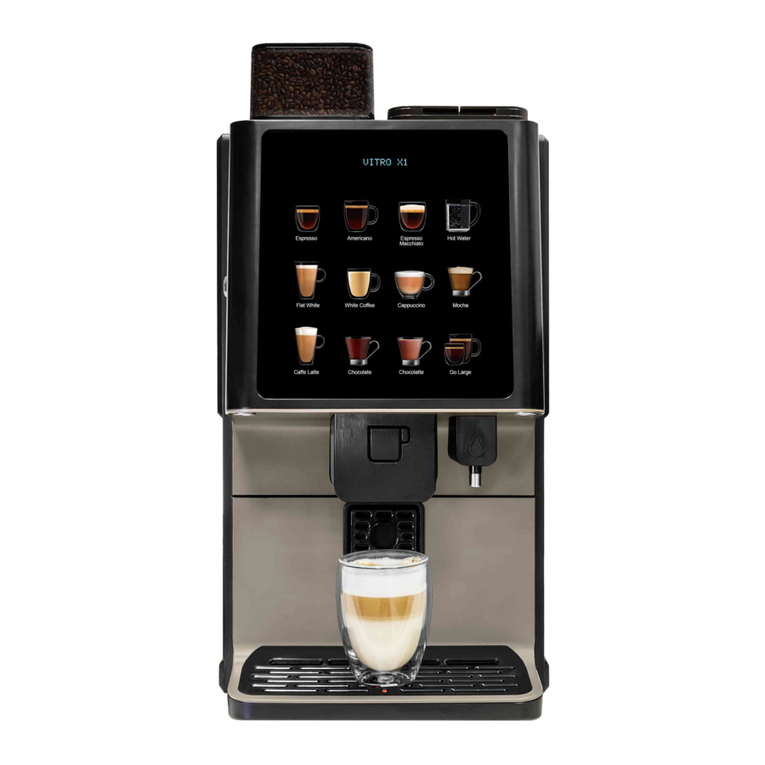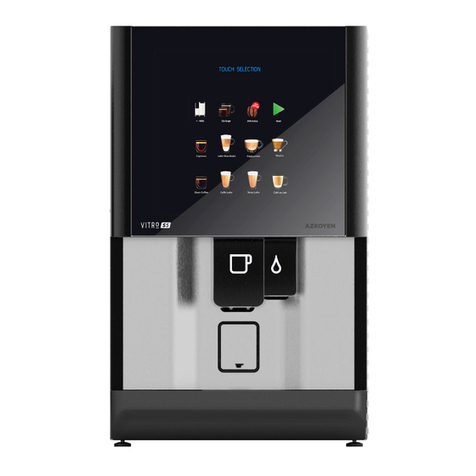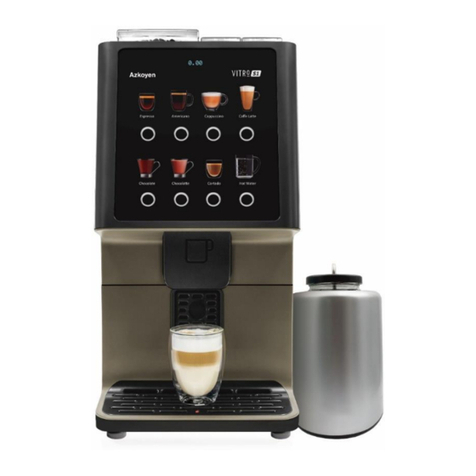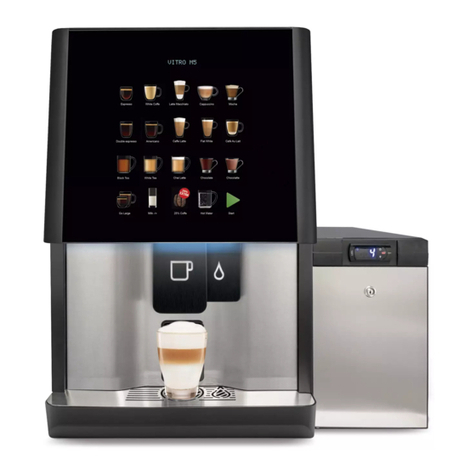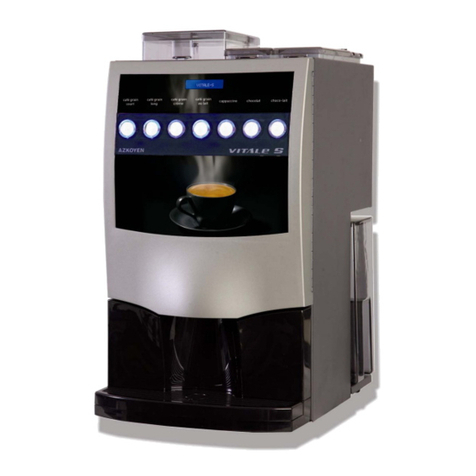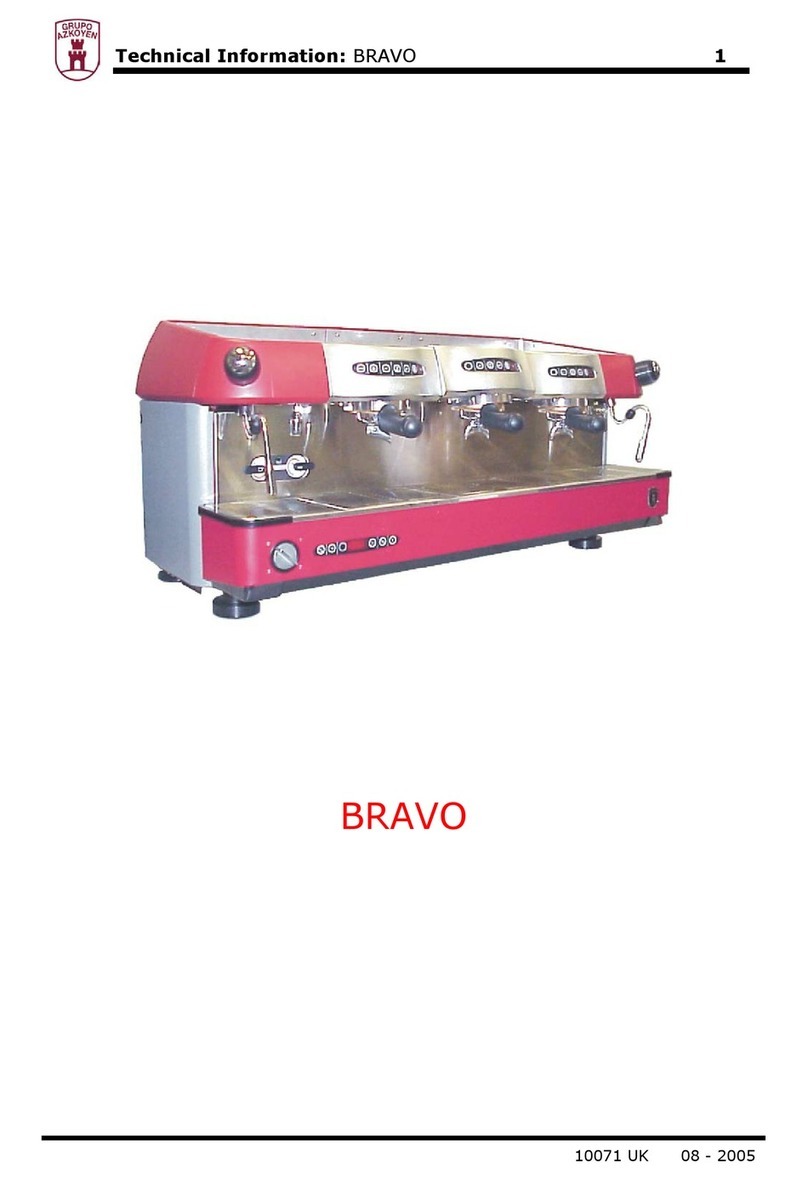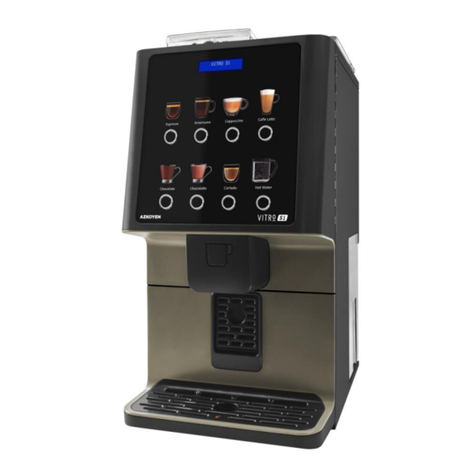
User Manual VITRO S1
- 3 -
WARNINGS ............................................................................................................................... 4
UE Declaration of Conformity ................................................................................................. 6
CHAPTER 1. GENERAL CHARACTERISTICS ........................................................................ 7
1.1.- Description of the machine. ........................................................................................... 7
1.2.- Description of the main components .............................................................................. 8
CHAPTER 2. INSTALLATION AND STARTING-UP ................................................................ 9
2.1.- Choice of location for the machine ................................................................................. 9
2.2.- Electrical installation ...................................................................................................... 9
2.3.- Start-up .......................................................................................................................... 9
2.4.- Water supply .................................................................................................................. 9
2.5.- Payment module .......................................................................................................... 10
CHAPTER 3. DESCRIPTION OF THE MACHINE .................................................................. 11
3.1.- Soluble product hoppers .............................................................................................. 11
3.2.- Initial loading of soluble product. .................................................................................. 11
3.3.- Loading coffee beans ................................................................................................... 11
3.4.- Initial loading of water .................................................................................................. 11
3.5.- Programming the water temperature under special conditions .................................... 12
3.6.- Bean coffee group (Espresso Machines) ..................................................................... 12
3.7.- Dismantling the coffee bean group .............................................................................. 13
3.8.- Settings and adjustments ............................................................................................. 13
CHAPTER 4. PROGRAMMING .............................................................................................. 15
4.1.- How do we communicate with the machine? ............................................................... 15
4.2.- What can be programmed? ......................................................................................... 15
4.3.- Programming menu .................................................................................................... 15
4.4.- List of functions ............................................................................................................ 16
4.5.- Customising the Programming Menu ........................................................................... 18
4.6.- Service programming. .................................................................................................. 18
CHAPTER 5 – TROUBLESHOOTING AND MAINTENANCE ................................................ 21
5.1 - Reset ........................................................................................................................... 21
5.2.- Error detected by the machine. .................................................................................... 21
5.3.- Changing the product labels ........................................................................................ 22
CHAPTER 6. CLEANING THE MACHINE. ............................................................................ 23
6.1.- Components that require regular cleaning ................................................................... 23
6.2.- Regular cleaning of the machine and maintenance operations ................................... 24
6.3.- Cleaning cycle for the group brewing chamber ............................................................ 24
6.4.- Descaling cycle. ........................................................................................................... 26
6.5.- Replacing the water filter ............................................................................................. 27
6.6.- Exterior cleaning .......................................................................................................... 27
Anexe 1. THE TREATMENT, COLLECTION, RECYCLING AND DISPOSAL OF THIS
DEVICE ................................................................................................................................... 28
